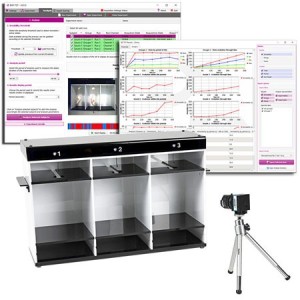Authors
P Dutar, V Tolle, M Kervern, C Carcenac, V Carola
Lab
NSERM UMU839, Institut du Fer à Moulin, Paris 75005 France Sorbonne Université, France.
Journal
Neuroscience
Abstract
Significant alterations in glutamatergic neurotransmission have been reported in major depressive disorder (MDD) that could underlie psychiatric traits. Studies were mainly interested in synaptic dysfunction in the prefrontal cortex, a key structure involved in depressive-like behavior, however hippocampus has been shown to be important in MDD. As cognitive deficits such as hippocampus-memory process were observed in MDD, we investigated in a mild hypoglutamatergic model behaviors related to depression and memory, synaptic transmission parameters and glutamatergic state specifically in the hippocampus. We thus characterized these phenotypes in adult male mice partially depleted in glutaminase type 1 or GLS1 (GLS1 HET), the enzyme responsible for glutamate synthesis in neurons, that we previously characterized as displaying moderate lower levels of glutamate in brain. We showed that GLS1 mutant mice display AMPA-R-mediated response deficits after prolonged repetitive stimulation with electrophysiological recording and inability to sustain glutamate release by microdialysis experiments with no consequences on behavioral spatial learning performances. However, their ability to escape from unpleasant but repeated escapable condition was attenuated whereas they were more immobile in the unescapable situation in the FST during re-test. These results show that GLS1 mutant mice display moderate impairments of hippocampal glutamatergic neurotransmission and moderate changes in adaptive behaviors that have been shown to participate to the development of depressive-like state.
BIOSEB Instruments Used
Tail Suspension Test - Wireless (BIO-TST5)
Source :
https://www.sciencedirect.com/science/article/pii/S030645221830753X

 Pain - Thermal Allodynia / Hyperalgesia
Pain - Thermal Allodynia / Hyperalgesia Pain - Spontaneous Pain - Postural Deficit
Pain - Spontaneous Pain - Postural Deficit Pain - Mechanical Allodynia / Hyperalgesia
Pain - Mechanical Allodynia / Hyperalgesia Learning/Memory - Attention - Addiction
Learning/Memory - Attention - Addiction Physiology & Respiratory Research
Physiology & Respiratory Research











![Dynamic Weight Bearing 2.0 – Postural Module [Add-on]](https://bioseb.com/733-home_default/dynamic-weight-bearing-20-add-on-postural-module.jpg)
























 Pain
Pain Central Nervous System (CNS)
Central Nervous System (CNS) Neurodegeneration
Neurodegeneration Sensory system
Sensory system Motor control
Motor control Mood Disorders
Mood Disorders Other disorders
Other disorders Muscular system
Muscular system Joints
Joints Metabolism
Metabolism Cross-disciplinary subjects
Cross-disciplinary subjects CONFERENCES & MEETINGS
CONFERENCES & MEETINGS 